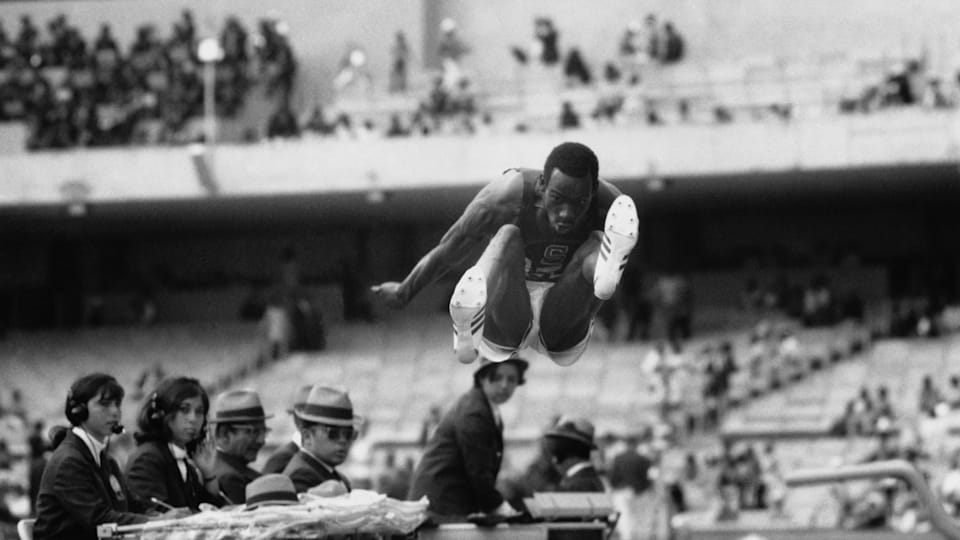Ground-breaking performances
Mexico 1968 saw some notable sporting achievements. Three US athletes led the way, taking their track and field events to new heights with performances that resonate to this day.

The USA’s Dick Fosbury changed the high jump forever with his revolutionary backward jumping style, which earned him a gold medal with an Olympic record of 2.24m. Known as the Fosbury Flop, his new technique was made possible by the use of deep foam matting in the landing area instead of sand. Previously, high jumpers had employed a variety of styles to clear the bar and land on their feet to avoid injury. With safety no longer an issue, the free-thinking US American used his knowledge of mechanics to arch his back on take-off and land face up. High jumpers have been using the Fosbury Flop ever since.
Fellow US athlete Bob Beamon won long jump gold with a new world record of 8.90m. Taking advantage of Mexico City’s thin air, Beamon beat the previous world record by 55cm. He leapt so far, in fact, that the long jump pit’s optical measuring device was unable to register it, forcing the judges to use a measuring tape instead. The American’s prodigious leap inspired a new word: “Beamonesque”, meaning “spectacular”. His world record stood for 23 years, until the USA’s Mike Powell jumped 8.95m at the 1991 Athletics World Championships in Tokyo.
The third athlete to make track and field history in Mexico City was the sprinter Jim Hines, also from USA, who became the first man to break the 10-second barrier in an Olympic 100m race. His time of 9.5 seconds in the final brought him the gold medal and a world record that stood for 15 years.